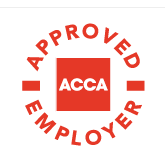Implications of Capital Gains Tax
Selling of residential property and the implications of Capital Gains Tax
Selling a property and the associated tax implications can seem very daunting to many homeowners, however, the aim of this blog will be to simplify and explain the most common type of reliefs and deductions available to help you better understand your possible capital gains liability.
For the purposes of this blog, I will be solely talking about those of you that are looking to sell a second property. This is because no capital gains tax falls due on the sale of your main place of residence.
What is capital gains tax?
Capital Gains Tax is a tax on the profit when you dispose of an asset that has increased in value.
The taxable amount is the difference between the purchase price and the sale proceeds.
The rate of capital gains tax for the selling of residential properties is currently set at 18% for basic rate taxpayers and 28% for higher rate.
Costs & Reliefs
Capital gains tax relief comes in the form of either allowable cost deductions or approved government relief/exemptions.
When calculating the total size of the gain made on the sale, relevant costs and reliefs will be deducted from the total proceeds from the sale to reduce the total taxable amount and mitigate your total capital gains tax liability.
COSTS
- Purchase price
The first thing you will deduct from the sale proceeds when working out your capital gain is the initial purchase price of the property.
- Legal costs
You are then also able to deduct the associated costs of buying and selling the property which includes things such as estate agent and solicitors fees etc.
- Capital improvements
Unlike revenue expenses that are offset against rental income, the cost of any capital improvements made to the property are instead, offset against your capital gain on the sale.
HMRC defines a capital improvement as one that:
- adds something to the property that was not there before ie. An extension
- alters, improves or upgrades something that was existing ie. Replacing an old kitchen with one of a higher specification
In order to offset these against your total gain, you MUST keep accurate records as to prove they have been incurred when you come to sell the property.
RELIEF
- Private residence relief (PRR)
As mentioned previously, homeowners will not pay capital gains tax on the sale of their main place of residence due to PRR.
If however, you have lived in your second property and it has been your main place of residence at any point before the sale takes place, then you may be entitled to private residence relief.
The total time you have lived in the property will reduce the total capital gain proportionally.
Ie. If you have owned a property for 10 years and lived in it as your main place of residence for 2.5, the gain will be reduced by 25% to reflect this.
- Final period exemption
If you have lived in the property for a period of time, current legislation permits that the last 18 month period of ownership before the sale takes place qualifies for PRR, even if you weren’t living there during this period.
However recent revisions made to PRR will see this 18 month period reduce to 9 months as of the 6th of April 2020.
(This period, however, is extended to 36 months for people who are disabled or living in a care home)
- Lettings relief
Historically, lettings relief was applicable to those who had let out a property, which has at some point been their main or only place of residence.
However, changes coming into effect on April 6th 2020 will make this relief much more difficult to claim. Instead, lettings relief will only be applicable if at any point the owner has shared the same occupancy as the tenant.
If this does, in fact, apply to you then you will be entitled to relief at the lower of the following options:
- The same amount you would receive through PRR
- £40,000 per owner, per property
- Same amount as the chargeable gain for letting out your home
- Annual exemption
Much like your yearly personal allowance that is deducted from your income, every UK taxpayer is entitled to an annual exempt capital allowance which is instead deducted from any capital gain arising in the year (after applying any of the above reliefs).
For the 2019-20 tax year, this currently sits at £12,000.
Jointly owned properties:
The gain on disposal is split proportionally depending on the respective share of the property along with any associated relief claimed (such as PRR and lettings reliefs).
Each individual can then deduct their annual exempt allowance and calculate the taxable capital gain whether that be at 18 or 28%.
Important change to CGT!
Please note that under current legislation any capital gains tax liability arising on the sale of a residential property must be made by the 31st of January following the year in which the gain was made.
HOWEVER, as of the 6th April 2020, any capital gains tax liability arising will instead have to be paid within 30 days from the completion of the sale.
Summary:
Again, please note that this is a very basic blog that aims to target the most common types of capital gains tax relief available when selling a second property where other forms of deductions and relief may be available to certain people in specific situations.
For more information please follow the link below or give us a call!
https://www.gov.uk/guidance/income-tax-when-you-rent-out-a-property-working-out-your-rental-income
For more information on important changes to PRR that will take effect on the 6th April 2020, please read Peter Jarman’s blog
https://www.brightonchamber.co.uk/blog/important-changes-to-ppr-from-6-april-2020-principal-private-residence-relief

You may also like…
Changes to CGT
Who needs to declare CGT?
Private residential relief
Director’s loan accounts
Extract funds from an ltd company
Buy-to-let properties







